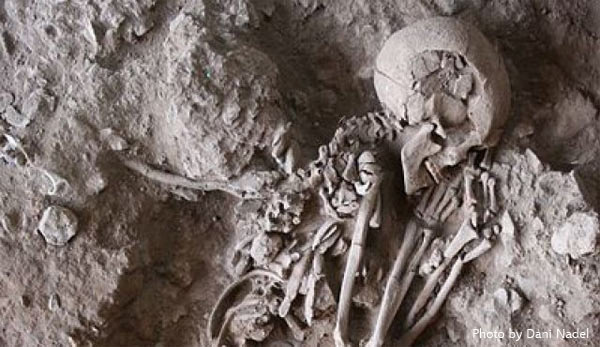Prehistoric man in Israel held ritual meals to honour the dead
A new study published in the Journal of Anthropological Archaeology has found evidence that prehistoric man who lived in the Carmel Mountains region in Haifa, Israel, held ritual meals following the burial of deceased loved ones. It is the first evidence of ritualised behaviour for this period in Israel.
During excavations between 2004 and 2011, archaeologists found a series of ancient graves in a Carmel Mountain cave located approximately 20 kilometres southeast of Haifa. The burial site contained 29 skeletons of babies, children and adults interred over a period of around a thousand years, dating back from around 13,700 years ago. However, more peculiarly, the researchers found thousands of animal bones in the graves alongside the human bodies. The bones belonged to a wide range of animals, including birds, tortoises, gazelles and wild boars.
The unusual findings led to much speculation and a wide range of hypotheses about what the animal bones were doing within the graves. Some scientists proposed that the animal bones were merely rubbished, tossed onto the grave site over the centuries, while others maintained that they were offerings to the dead. Both theories have been refuted in the latest study, and a new hypothesis proposed.
Dr Reuven Yeshurun, a co-author of the study, rejected the hypothesis that the bones were offerings, because the custom at the time was to use whole animal body parts as burial offerings, such as a bird wing or a mammalian shank. However, the animal bones found at the burial site were not whole bones, nor were they laid in an orderly configuration. Rather, there was a wide-range of bones and fragments scattered around the burial pit.
Yeshurun also rejected the hypothesis that the bones were merely rubbish scattered by earlier dwellers in these caves, and that later inhabitants used the same pits for burial. According to Dr Yeshurun, any bones left over from meals would have been ground underfoot, shattered by trampling, or burnt when fires were lit. But the bones found in the cave were much less burnt and shattered than those found at other settlements. In addition, the cave has no signs of dwelling – it was apparently only used for burial.
It does appear, however, that the bones were the remains of meals because they show marks of butchery on them. This led to the third hypothesis, namely that the bones were placed in the graves for symbolic and social reasons, following a ritualistic meal to honour the deceased.
“The untypical and meticulous gathering of the leftover bones indicates that it had some significance after the meal was over, possibly of stashing it with the deceased," says Yeshurun. Feasting at wakes, with the apparent participation of the entire group, may have been an expression of attempts to foster social cohesion.
The people who were buried in the cave belonged to the Natufian culture. They are believed to be among the first groups of humans to abandon the nomadic way of life and to settle in permanent locations. They were also among the first groups known to establish graveyards - defined spaces in which they buried their dead for many generations. Now it appears that their traditions and social organisation were much more advanced than initially thought.



















